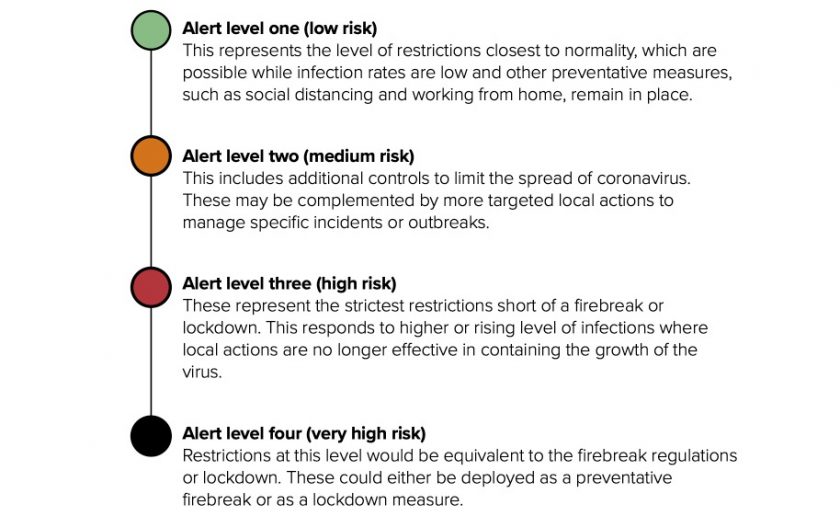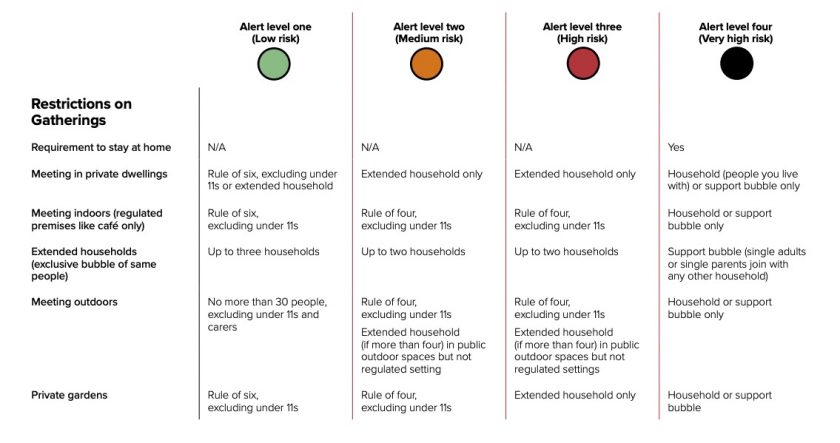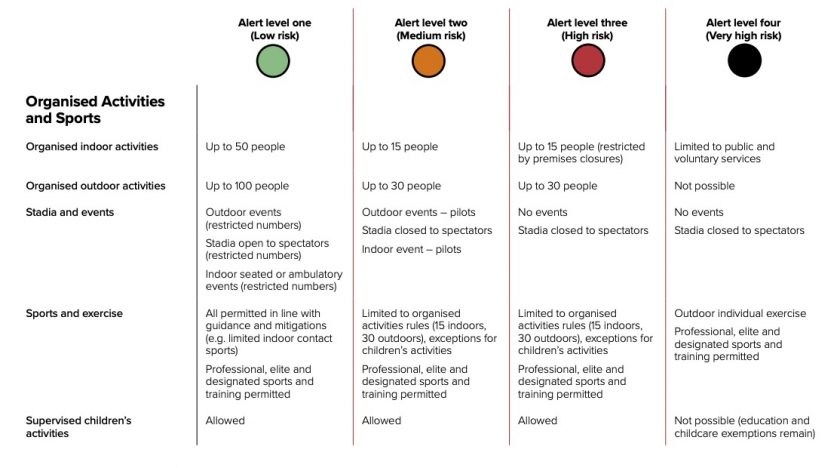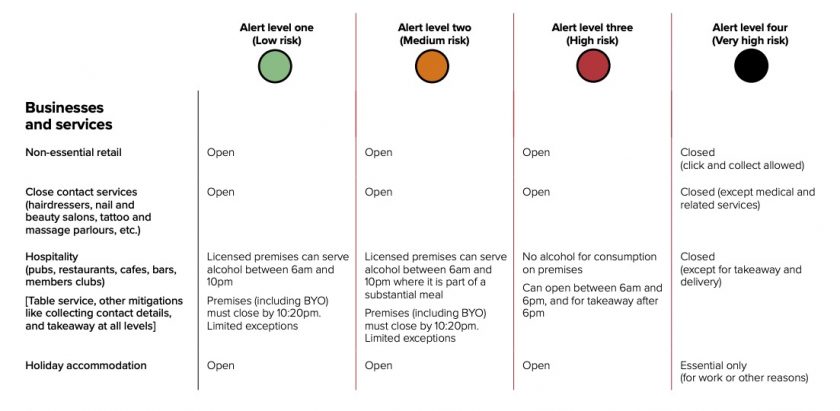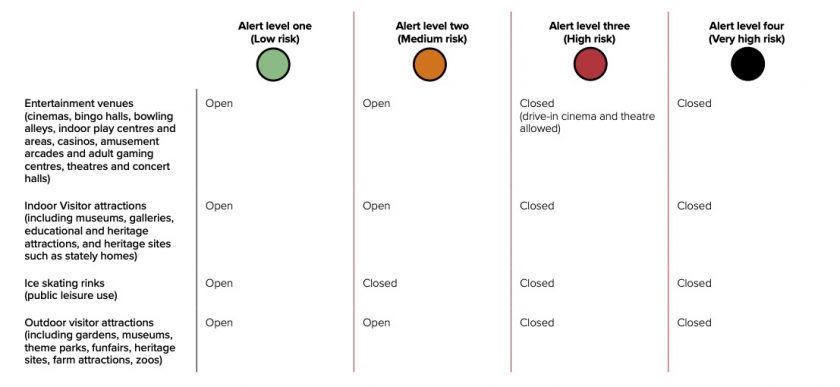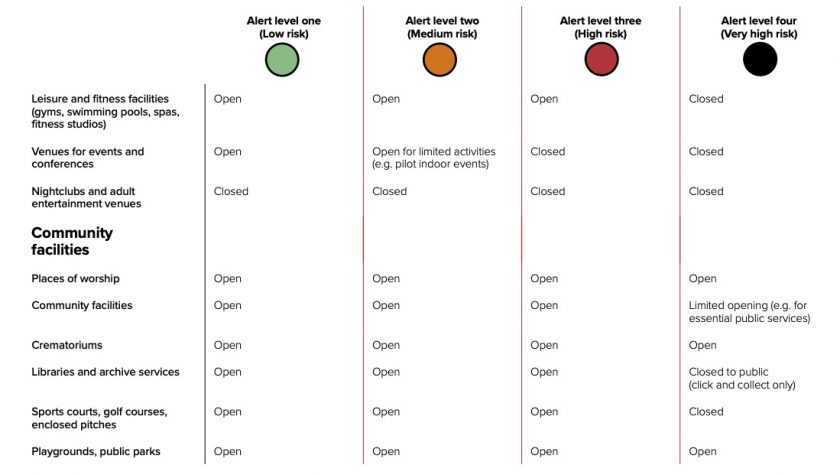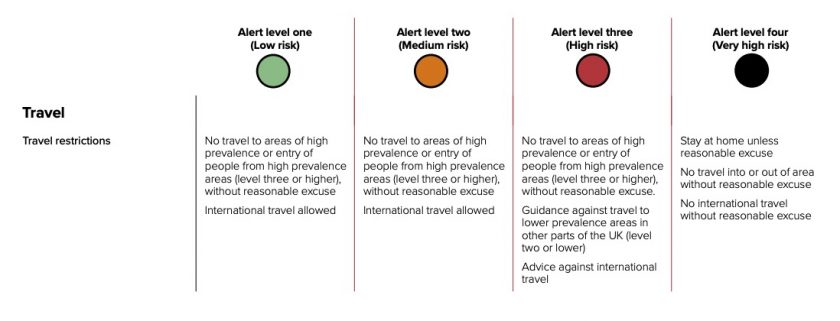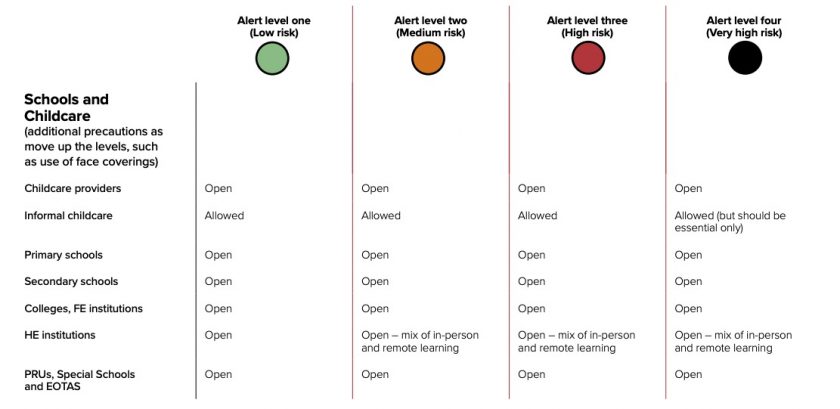Criteria for new ‘alert levels’ published – with “National, regional or local” intervention possible
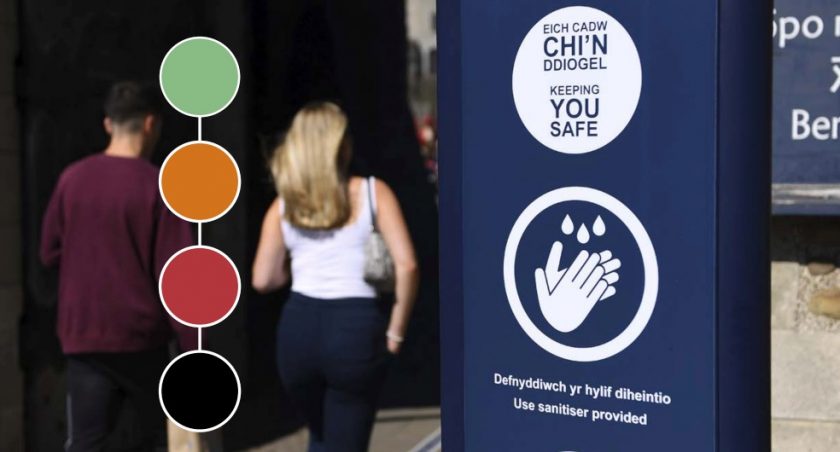
The Welsh Government has today published a new coronavirus control plan that includes new ‘alert level’ criteria for Wales.
The new document outlines what each level means, how a decision will be made on which level to introduce and what areas could be subject to increased or lowered restrictions as a result.
In a preamble written by both the First Minister Mark Drakeford and Health Minister Vaughan Gething they appeal to the people of Wales “to help by not just following the rules but by making small changes to their daily routines and lives and reducing the contact they have with other people. This virus thrives on human contact – whenever we spend time with others there is a risk we will either catch or pass on coronavirus.”
They also point to a ‘level zero’, where there will be no restrictions.
They add: “We are grateful to people and businesses across Wales for their continued efforts to tackle this virus.
“As we begin the process of rolling out the COVID-19 vaccine throughout Wales, we can be optimistic but we must also be cautious. We all need to work together to Keep Wales Safe.”
The new traffic light ‘alert level system is detailed via the following graphic, with Wales in Level 3 currently:
The Welsh Government say: “The legal restrictions described in this document are a last resort. No government wants to place these restrictions and constraints on people’s freedoms and on the economy. ”
“It is important to remember we can all be carriers of coronavirus without knowing it, and we should act accordingly. Restrictions can be avoided if we all change our behaviour and avoid doing those things that can spread the virus. Unfortunately, restrictions become necessary when the virus begins to spread.”
“We recognise these are blunt instruments, which may seem unfair on those who minimise risks and on those premises that are scrupulous in doing the same. But the virus does not discriminate and can present itself in any environment, which is why a universal approach is necessary. ”
The ‘key indicators’ to decide each level are in the document that include, but are not limited to:
- Level One: Case rate of 50 per 100k , confirmed case rates for over 60s remain low. Test positivity below 3% over seven days. Hospital capacity being managed effectively and any potential pressure from increased cases is at least five to six weeks away.
- Level Two: Case rate between 50 and 150 cases per 100k, Test positivity more than 3% over seven days , Projection of future case incidence rates over next two weeks does not suggest significant rises.
- Level Three: Case rate more than 150 per 100k, test positivity over 5% over seven days and projection of future case incidence rates over next two weeks not anticipating significant rises.
- Level Four: Case rate more than 300 per 100k rolling seven day figure. Projection of future case incidence rates over next two weeks anticipating significant rises to more than 500 cases per 100,000 people, and Test positivity above 10% over seven days.
Wrexham today is reported as having 249 cases per 100k on the seven day figures with a positive proportion of tests at 15.2%
Welsh Government do not rule out very local measures with ‘national, regional or local intervention’ possible, stating: “The alert levels and the measures set out will allow for assessment and action at any geographical level.”
The document also describes to the ‘local lockdowns’ introduced in the autumn as ‘not effective’ for longer durations.
With local authority areas and regions being considered for the new Alert Levels, it appears neighbouring council figures could affect others: “Our approach to analysing the data will consider patterns and trends between neighbouring local authority areas.
“If there is evidence of a sustained and clear difference between some parts of Wales compared to others we will consider whether a regional approach would work better for those areas.
“This might involve a region of neighbouring local authorities – all interconnected and with similar patterns of infection – moving into a different level to other parts of Wales.
“In considering any options, we will take into account the underlying trends in those and neighbouring areas as well as the views of local health professionals, local leaders and local partners. ”
Today’s document also states: “Following the advice of the UK Scientific Advisory Group on Emergencies (SAGE), this approach draws on what has worked elsewhere in the UK and lessons from our own experience.
“These all-Wales measures are designed to be as simple, fair and clear as possible. They also reflect the advice we have had from our own Technical Advisory Group (TAG), which coordinates scientific and technical advice to support Welsh Government decision-makers during emergencies.”
On Friday we pointed out that Technical Advisory Group documents state the importance of the simplicity of messaging, and asked the first minister why there is a reluctance to call the ‘alert levels’ ‘tiers’, and if they are not the same thing, what the difference is.
Mr Drakeford said: “I don’t know if that is a particularly significant point, we called it a traffic light system earlier in the year, it is still a traffic light system but with one additional alert level, which is beyond the red level that we are in now.
“I’m not sure that the titles will make a great deal of difference on our ability to get people to understand them.”
A sector based chart has also been produced, to explain what each alert level will mean:
Spotted something? Got a story? Email [email protected]
